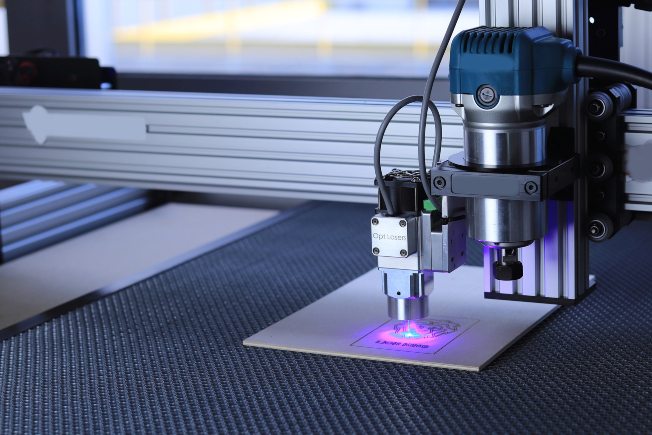Engraving is used for a huge variety of items and circumstances. From bespoke jewelry or other gifts to clothing, signage, promotional items, memorials, plaques and trophies, even the serial numbers on your car parts. The results of engraving are all around us yet rarely do we see engraving in action.
For many of us, the only time we see engraving being done is during a major sporting tournament. When the victory is imminent, the trophy is handed to the engraver who engraves the winner’s name by hand, ready for the presentation. In truth, hand engraving is rare these days; even mechanical engraving is less common.
Instead, laser engraving is becoming the norm. But, what exactly is laser engraving, is there more than one type and is it better quality than mechanical engraving?
To find answers to these questions and discover all about how laser engraving works – read on.
What Is Laser Engraving?
Engraving is when a design is permanently etched onto a material. Laser engraving is when a material is superheated by a laser beam to create the design onto the material.
Depending on the time the material is exposed to the laser, it will either burn or evaporate away. This is how the design, whether image or lettering or both, is permanently engraved onto the material and how the depth of the engraving is chosen.
The laser knows what design to burn into the material via a graphics program on a computer. The computer sends the design to the laser in the same way that it would send a design to a printer.
Types Of Laser Engraving
Raster Engraving
Raster engraving is the standard form of laser engraving and uses pixels. These are engraved onto the material line by line. If looking at the engraving taking place, the machine moves left to right across the whole design. The design appears from top to bottom. This method is best for large designs and filled areas such as letters.
Vector Engraving
With vector engraving, the design is created with lines and curves. With each line, curve, letter or shape being engraved as a whole. Vector engraving is usually used for thin lines and/or smaller designs.
Advantages Of Laser Engraving Over Mechanical Engraving
Generally speaking, due to the advances in laser engraving over the last 10 years, it is faster, cheaper and of higher quality than mechanical engraving. The precision of laser engraving means that even the most complicated designs or finest lines can be replicated perfectly. And, the depth of the engraving can be more exact too.
Laser engraving does not require the use of extra tools. This makes sense financially as not only is there no outlay for tools initially, but there is less maintenance required too.
The versatility of laser engraving also gives it an advantage over mechanical engraving. Laser engraving can be done on a huge variety of materials from soft and hard metals, wood, and paper to glass and fabrics. The non-contact nature of laser engraving helps to make this possible as the material being engraved does not need to be clamped or otherwise held in place.
Laser engraving, as it is used in combination with a graphics program on a computer, means that designs can be recreated with ease or large orders can be done simply and quickly. Get in touch with us at Furnells for more information and advice on laser engraving or to enquire about our personalised engraving services.

